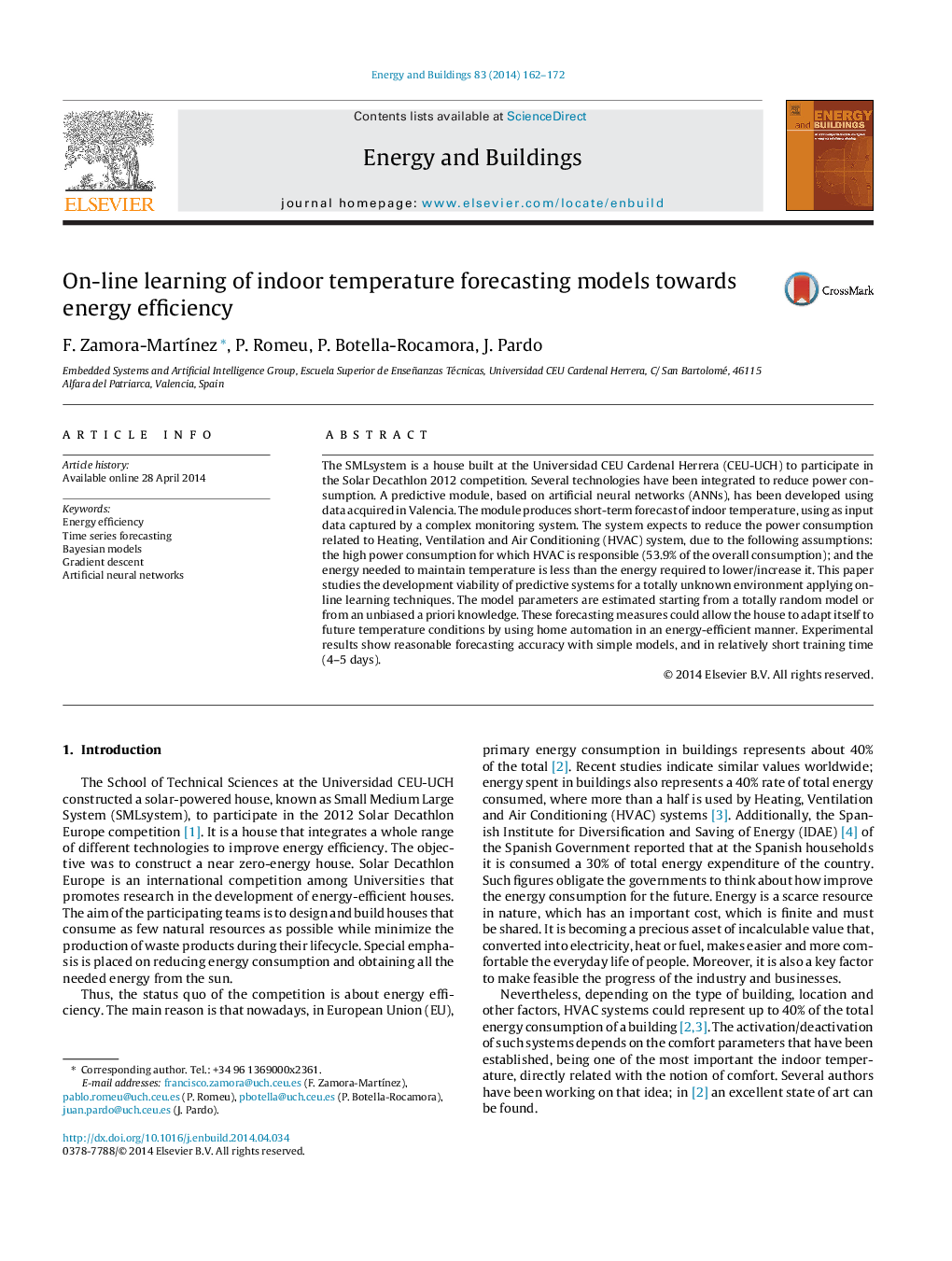| Article ID | Journal | Published Year | Pages | File Type |
|---|---|---|---|---|
| 262739 | Energy and Buildings | 2014 | 11 Pages |
•The monitoring system of the SMLsystem house is presented.•On-line learning for estimation of indoor forecasting models is proposed.•A comparison between Bayesian and gradient descent estimation techniques is shown.•The major finding is that complex models show worst behavior than simple ones.•The integration in real hardware devices with low resources is discussed.
The SMLsystem is a house built at the Universidad CEU Cardenal Herrera (CEU-UCH) to participate in the Solar Decathlon 2012 competition. Several technologies have been integrated to reduce power consumption. A predictive module, based on artificial neural networks (ANNs), has been developed using data acquired in Valencia. The module produces short-term forecast of indoor temperature, using as input data captured by a complex monitoring system. The system expects to reduce the power consumption related to Heating, Ventilation and Air Conditioning (HVAC) system, due to the following assumptions: the high power consumption for which HVAC is responsible (53.9% of the overall consumption); and the energy needed to maintain temperature is less than the energy required to lower/increase it. This paper studies the development viability of predictive systems for a totally unknown environment applying on-line learning techniques. The model parameters are estimated starting from a totally random model or from an unbiased a priori knowledge. These forecasting measures could allow the house to adapt itself to future temperature conditions by using home automation in an energy-efficient manner. Experimental results show reasonable forecasting accuracy with simple models, and in relatively short training time (4–5 days).
